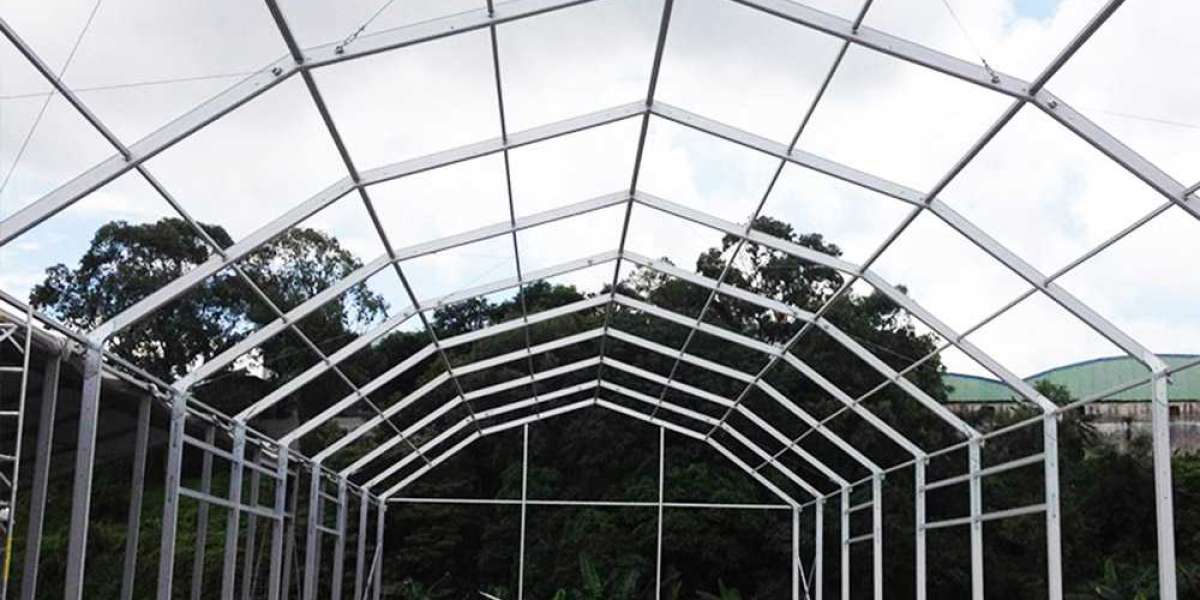When it comes to selecting the ideal material for tent structure frames, the debate between steel and aluminum often arises. Both materials offer distinct advantages and drawbacks, making the decision a complex one. Factors such as durability, weight, cost, and environmental impact all come into play. We will delve into the characteristics of steel and aluminum tent structures to determine which is the superior choice for various applications.
Steel Tent Structure Frames: Strength and Durability
Steel is renowned for its robustness and durability, making it a popular choice for tent structure frames in demanding environments. Its high tensile strength enables steel frames to withstand extreme weather conditions, such as strong winds and heavy snow loads, without compromising structural integrity. This durability makes steel tent structures ideal for long-term installations and applications where resilience is paramount, such as industrial sites, military encampments, and disaster relief operations.
Moreover, steel tent structures boast a longer lifespan compared to their aluminum counterparts. The inherent corrosion resistance of steel, especially when galvanized or coated, enhances its longevity, reducing maintenance requirements and long-term costs. Additionally, steel frames offer superior load-bearing capabilities, allowing for larger spans and increased flexibility in design.
However, it's essential to consider the weight of steel tent structures, which can be significantly heavier than aluminum alternatives. Transportation and installation may require more extensive equipment and manpower, potentially increasing logistical challenges and costs, particularly for temporary or portable applications.
Aluminum Tent Structure Frames: Lightweight and Versatile
Aluminum emerges as a compelling alternative to steel, particularly in scenarios where weight and portability are critical considerations. Aluminum tent structure frames offer significant advantages in terms of their lightweight nature, facilitating easier transportation, handling, and assembly. This characteristic makes aluminum structures particularly well-suited for temporary events, such as festivals, trade shows, and outdoor gatherings, where rapid setup and takedown are paramount.
Furthermore, aluminum exhibits excellent corrosion resistance, albeit not to the same extent as steel. However, advancements in aluminum alloys and surface treatments have enhanced its durability, ensuring prolonged service life even in harsh environmental conditions. While aluminum may not match steel in sheer strength, modern engineering techniques have enabled the design of aluminum tent structures that meet stringent safety standards while optimizing weight and performance.
Another notable advantage of aluminum tent frames is their recyclability and environmental friendliness. Aluminum is highly recyclable, with the potential for significant energy savings during the recycling process compared to primary production. This sustainability aspect appeals to environmentally conscious consumers and organizations seeking to minimize their carbon footprint.
Cost Considerations: Steel vs. Aluminum
Cost considerations play a crucial role in the decision-making process when selecting tent structure frames. While steel typically boasts lower material costs compared to aluminum, other factors must be taken into account. The weight of steel may necessitate heavier-duty transportation and equipment for installation, potentially offsetting initial cost savings. Additionally, maintenance costs, including corrosion protection measures and repairs, can impact the long-term affordability of steel tent structures.
Conversely, aluminum tent structures may have higher upfront material costs but offer potential savings in transportation, labor, and maintenance expenses. The lightweight nature of aluminum reduces handling and installation time, lowering associated labor costs. Moreover, aluminum's corrosion resistance minimizes the need for ongoing maintenance, contributing to overall cost-effectiveness over the structure's lifespan.
Environmental Impact: Sustainability and Recycling
In an era increasingly focused on sustainability, the environmental impact of tent structure materials cannot be overlooked. Steel production typically involves significant energy consumption and carbon emissions, although the longevity and recyclability of steel tent frames mitigate some of these concerns. Proper disposal and recycling of steel materials at the end of their service life contribute to a closed-loop system, reducing the demand for virgin resources and minimizing environmental harm.
On the other hand, aluminum stands out for its high recyclability and energy efficiency during recycling. The recycling process for aluminum requires substantially less energy compared to primary production, resulting in lower greenhouse gas emissions and resource consumption. As such, aluminum tent structures align with eco-conscious principles, offering a sustainable solution for temporary and permanent shelter needs.
Conclusion:
The decision between steel and aluminum tent structure frames depends on various factors, including strength requirements, weight considerations, cost constraints, and environmental priorities. Steel excels in terms of strength and durability, making it suitable for heavy-duty applications and long-term installations. However, aluminum offers compelling advantages in terms of lightweight portability, versatility, and environmental sustainability.
Ultimately, the ideal choice depends on the specific needs and priorities of the project or application. For permanent structures or projects requiring exceptional strength and durability, steel may be the preferred option. In contrast, aluminum shines in temporary installations, events, and situations where rapid deployment, portability, and sustainability are paramount. By carefully weighing these factors, stakeholders can make informed decisions to ensure the optimal performance and longevity of tent structures in diverse settings.






